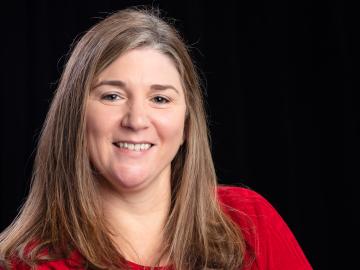Filter News
Area of Research
- (-) Isotopes (35)
- (-) National Security (79)
- (-) Supercomputing (311)
- Advanced Manufacturing (34)
- Biological Systems (18)
- Biology and Environment (177)
- Biology and Soft Matter (5)
- Building Technologies (12)
- Chemical and Engineering Materials (4)
- Chemistry and Physics at Interfaces (11)
- Clean Energy (522)
- Climate and Environmental Systems (14)
- Computational Biology (6)
- Computational Chemistry (5)
- Computational Engineering (5)
- Computer Science (19)
- Data (1)
- Earth Sciences (1)
- Electricity and Smart Grid (3)
- Energy Frontier Research Centers (14)
- Energy Sciences (5)
- Fossil Energy (3)
- Fuel Cycle Science and Technology (3)
- Functional Materials for Energy (16)
- Fusion and Fission (54)
- Fusion Energy (17)
- Geographic Information Science and Technology (3)
- Isotope Development and Production (3)
- Materials (433)
- Materials Characterization (2)
- Materials for Computing (36)
- Materials Synthesis from Atoms to Systems (13)
- Materials Under Extremes (12)
- Mathematics (1)
- Neutron Data Analysis and Visualization (4)
- Neutron Science (190)
- Nuclear Science and Technology (74)
- Nuclear Systems Modeling, Simulation and Validation (3)
- Nuclear Systems Technology (1)
- Quantum Condensed Matter (4)
- Quantum information Science (9)
- Reactor Technology (1)
- Renewable Energy (4)
- Sensors and Controls (5)
- Transportation Systems (11)
News Type
News Topics
- 3-D Printing/Advanced Manufacturing (7)
- Advanced Reactors (2)
- Artificial Intelligence (45)
- Big Data (22)
- Bioenergy (11)
- Biology (14)
- Biomedical (22)
- Biotechnology (3)
- Buildings (4)
- Chemical Sciences (5)
- Climate Change (21)
- Computer Science (104)
- Coronavirus (16)
- Critical Materials (3)
- Cybersecurity (23)
- Decarbonization (6)
- Energy Storage (10)
- Environment (26)
- Exascale Computing (22)
- Frontier (28)
- Fusion (2)
- Grid (11)
- High-Performance Computing (40)
- Irradiation (1)
- Isotopes (25)
- Machine Learning (23)
- Materials (20)
- Materials Science (18)
- Mathematics (1)
- Microscopy (7)
- Molten Salt (1)
- Nanotechnology (11)
- National Security (36)
- Net Zero (1)
- Neutron Science (15)
- Nuclear Energy (11)
- Partnerships (4)
- Physics (8)
- Polymers (2)
- Quantum Computing (19)
- Quantum Science (25)
- Security (14)
- Simulation (14)
- Software (1)
- Space Exploration (6)
- Summit (42)
- Sustainable Energy (12)
- Transportation (8)
Media Contacts

Raina Setzer knows the work she does matters. That’s because she’s already seen it from the other side. Setzer, a radiochemical processing technician in Oak Ridge National Laboratory’s Isotope Processing and Manufacturing Division, joined the lab in June 2023.

A type of peat moss has surprised scientists with its climate resilience: Sphagnum divinum is actively speciating in response to hot, dry conditions.

As vehicles gain technological capabilities, car manufacturers are using an increasing number of computers and sensors to improve situational awareness and enhance the driving experience.

Using neutrons to see the additive manufacturing process at the atomic level, scientists have shown that they can measure strain in a material as it evolves and track how atoms move in response to stress.

A new study by researchers at the Department of Energy’s Oak Ridge National Laboratory looks at some of the influences that could be driving the increasingly severe weather over Pakistan.

Mike Benson has spent the last 10 years using magnetic resonance imaging systems — much as you find in a hospital — to understand the fluid dynamics of flows around objects and even scaled replicas of cities. He aims to apply MRI scanning to

Safety, Engineering and Support Section Head Michele Baker brings strategic planning and emergency management skills to the role.

As current courses through a battery, its materials erode over time. Mechanical influences such as stress and strain affect this trajectory, although their impacts on battery efficacy and longevity are not fully understood.

The Department of Energy’s Oak Ridge National Laboratory announced the establishment of the Center for AI Security Research, or CAISER, to address threats already present as governments and industries around the world adopt artificial intelligence and take advantage of the benefits it promises in data processing, operational efficiencies and decision-making.

ORNL hosted its annual Smoky Mountains Computational Sciences and Engineering Conference in person for the first time since the COVID-19 pandemic.




